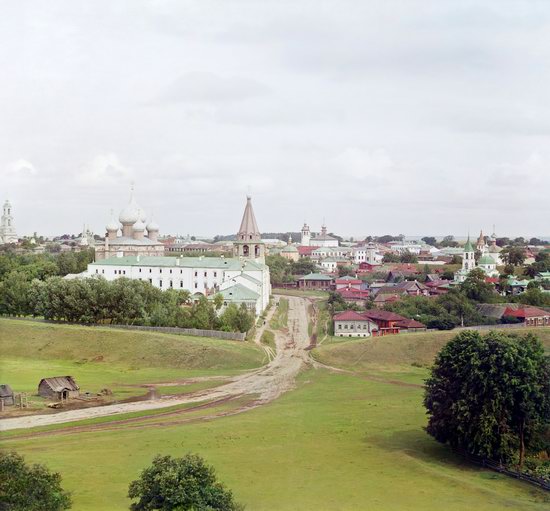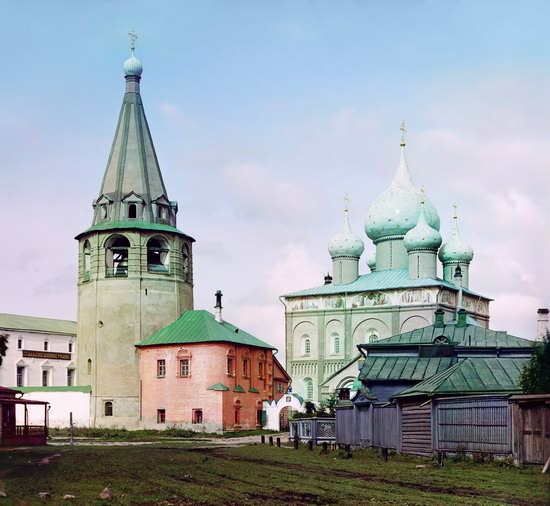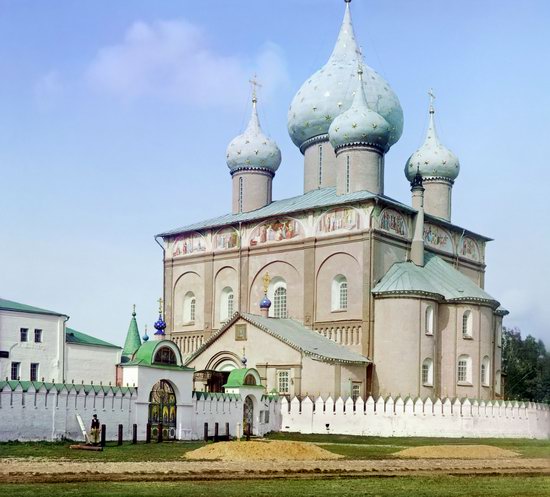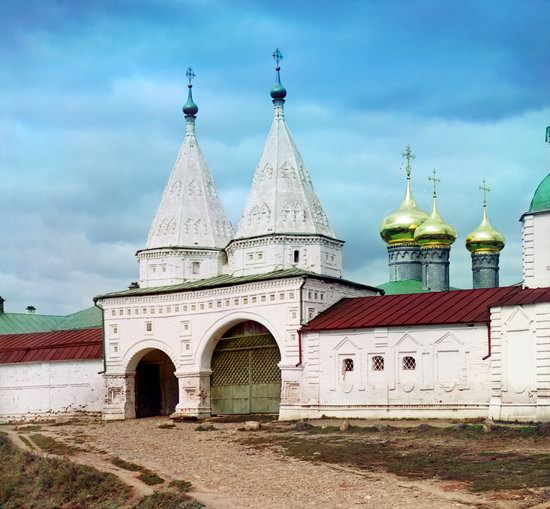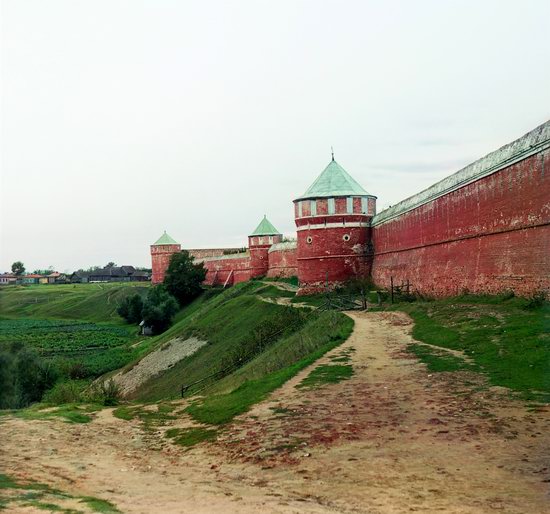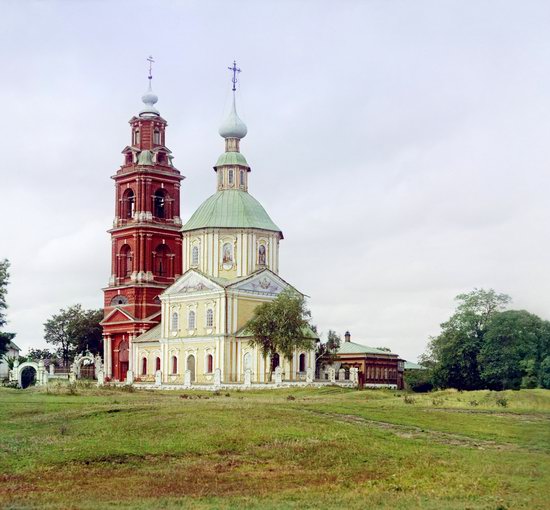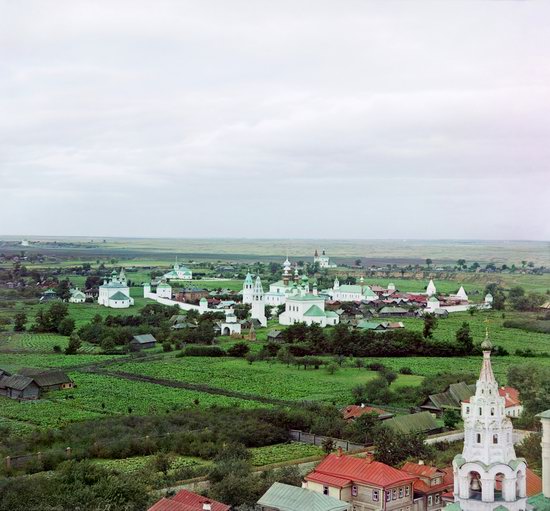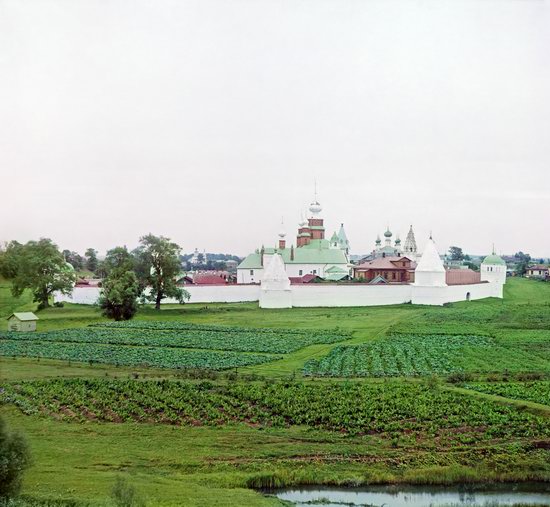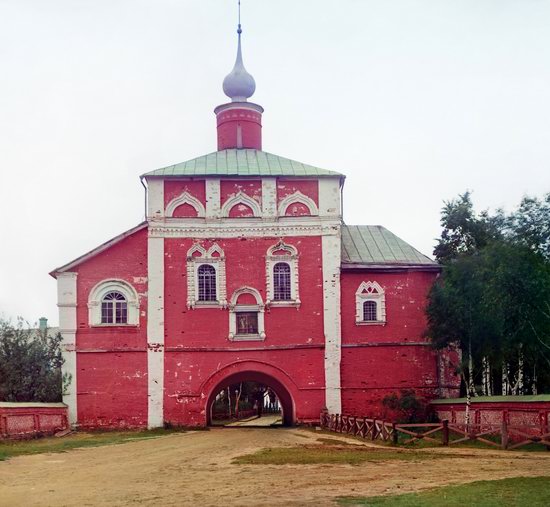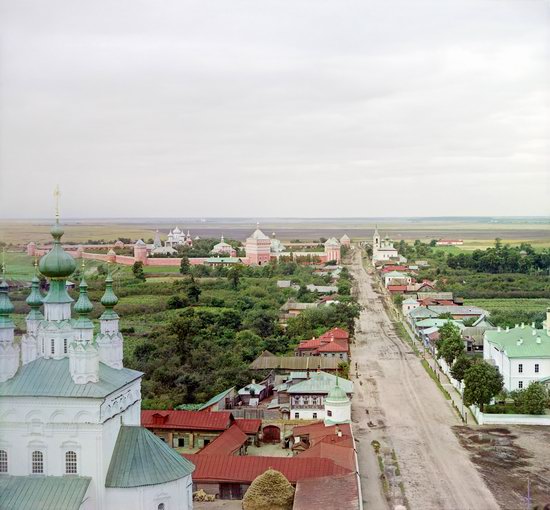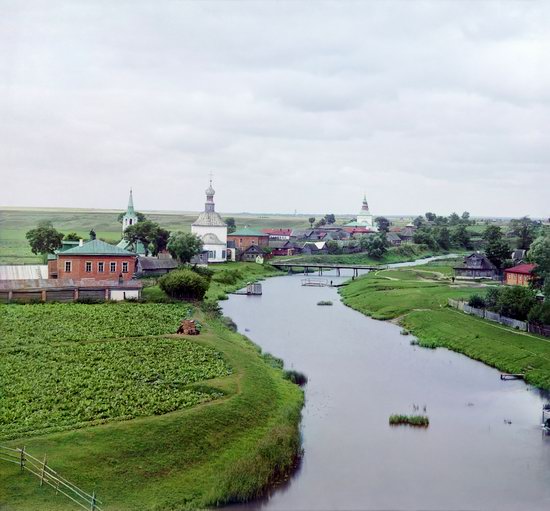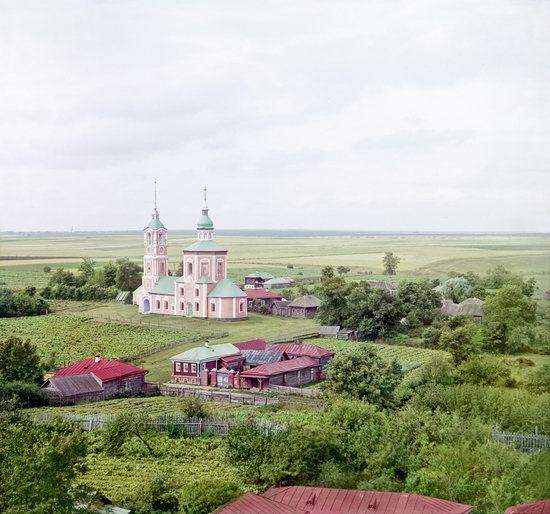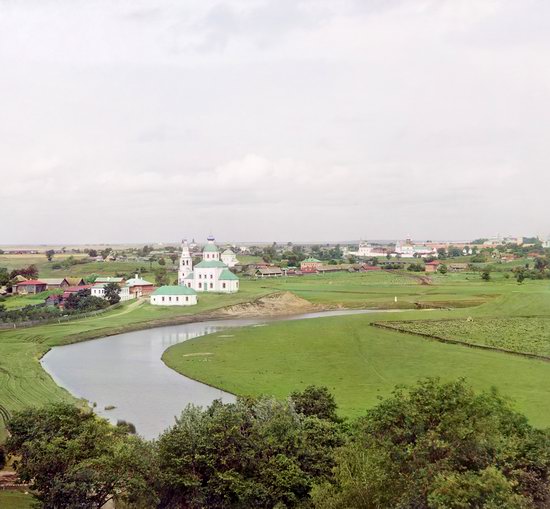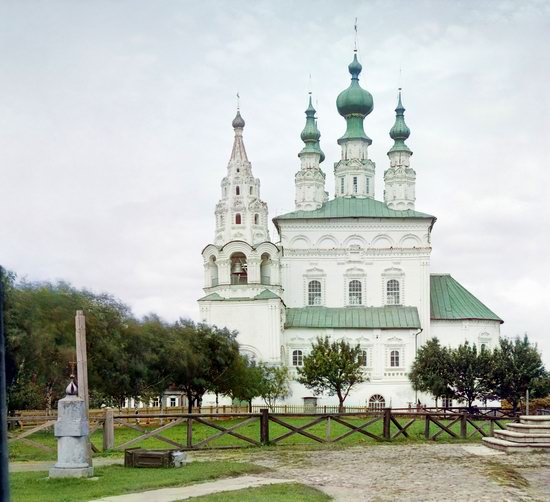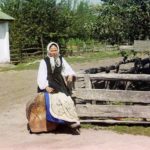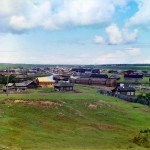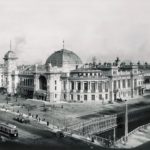Suzdal is a small town-reserve with a population of about 9,300 people located in the northern part of Vladimir Oblast in the center of the European Russia. It is one of the oldest towns in the country, first mentioned in written sources about 1,000 years ago.
Let’s see what Suzdal looked like in the relatively recent past, in the last years of the Russian Empire. In 1912, it was visited by Sergey Prokudin-Gorsky, a Russian chemist and photographer known for his pioneering work in color photography. At that time, the population of Suzdal was about 7,700 people. Photos by: Open research project “The Legacy of S.M. Prokudin-Gorsky”.
General view of Suzdal.
Suzdal was a remote provincial town without any industry. This was partly due to the fact that it was located away from the railway. This situation made it possible to preserve its old buildings, and primarily churches, from clumsy renovations and reconstructions.
Cathedral of the Nativity of the Blessed Virgin (1222-1225) with a bell tower (1635).
Entrance gates of Prepodobenskiy Rizpolozhenskiy Monastery (1688).
Wall of Savior-Euthymius Monastery.
Church of St. Demetrius of Thessaloniki.
Pokrovsky Convent.
Gate to St. Euthymius Monastery.
General views of Suzdal.
Borisoglebsk Church.
Church of the Life-Giving Trinity in Prepodobenskiy Monastery.
In 1965, Moscow journalist Yuri Bychkov, while on a trip to Suzdal, came up with a circular tourist route, now known as the Golden Ring of Russia, which includes Suzdal. Today, due to the fact that Suzdal has preserved a large number of architectural monuments, it remains a popular tourist center.
Tags: Russian Empire · Vladimir oblast
You might also like:
<< Educating Readers in the USSR in 1926-1929

